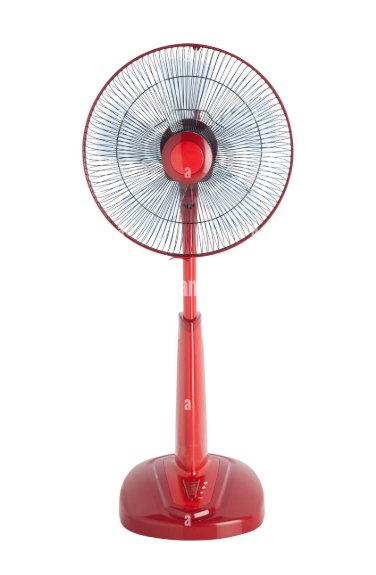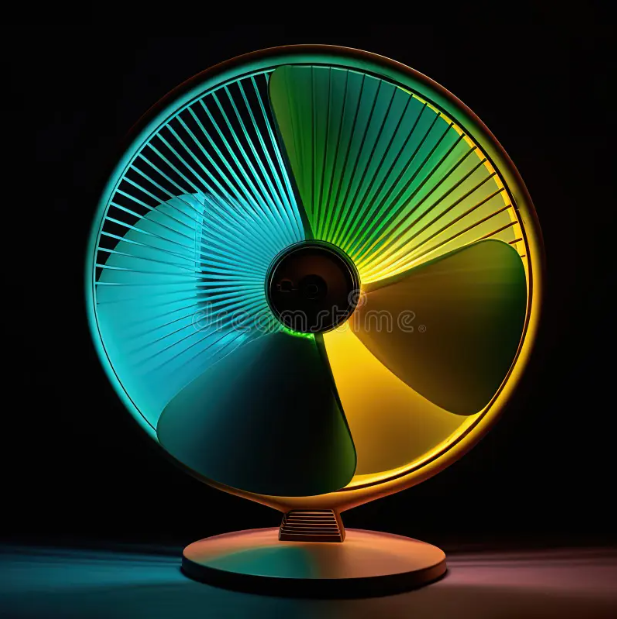In today’s smart home era, an electric fan with WiFi control offers a modern twist on traditional cooling. These innovative devices combine the simplicity of a classic electric fan with the convenience of smartphone apps, voice assistants, and automated schedules, making them a game-changer for home comfort. Whether you’re looking to cool a small room or enhance your smart home ecosystem, an electric fan with WiFi control provides flexibility, energy efficiency, and ease of use. In this comprehensive guide, we’ll explore the benefits, features, setup, and maintenance of these smart fans, along with practical electric fan tips to help you get the most out of your device. For more insights on cooling solutions, visit our cooling guide.
What is an Electric Fan with WiFi Control?
An electric fan with WiFi control is a cooling device that can be operated remotely via a smartphone app, voice commands, or integrated smart home systems like Amazon Alexa, Google Home, or Apple HomeKit. Unlike traditional fans, these smart fans connect to your home’s WiFi network, allowing you to adjust speed, oscillation, and other settings from anywhere, even when you’re not at home. Some models also include advanced features like timers, temperature-based automation, and integration with other smart devices.
These fans come in various forms, such as tower fans, pedestal fans, or even portable electric fans, making them versatile for different spaces. They’re designed to offer convenience while maintaining the affordability and energy efficiency that electric fans are known for. For a deeper dive into choosing the right model, check out our best electric fan guide.
Benefits of an Electric Fan with WiFi Control
Why choose an electric fan with WiFi control over a standard fan? Here are the key advantages that make these devices stand out:
- Remote Access: Control your fan from anywhere using a smartphone app, whether you’re at work, on vacation, or simply lounging on the couch.
- Voice Control: Many WiFi-enabled fans are compatible with Alexa, Google Assistant, or Apple HomeKit, allowing hands-free operation with simple voice commands like, “Turn on the fan.”
- Automation and Scheduling: Set timers or schedules to turn the fan on or off at specific times, helping you save energy and maintain comfort.
- Energy Efficiency: Like traditional fans, WiFi-controlled models use minimal electricity (typically 20–100 watts), making them a cost-effective alternative to air conditioners.
- Smart Home Integration: Pair your fan with other smart devices, such as thermostats or sensors, to create a fully automated cooling system.

How to Choose the Best Electric Fan with WiFi Control
With so many options available, selecting the right electric fan with WiFi control can feel overwhelming. Here are some factors to consider when shopping for the perfect model:
1. Fan Type and Size
WiFi-controlled fans come in various designs, including tower fans, pedestal fans, and portable models. Tower fans are sleek and space-saving, ideal for small apartments, while pedestal fans offer powerful airflow for larger rooms. Portable electric fans with WiFi control are perfect for those who need flexibility to move the fan between spaces. Consider the size of the room and your cooling needs when choosing a model.
2. Smart Features
Look for fans with robust smart features, such as:
- App control via platforms like Smart Life, Mi Home, or brand-specific apps.
- Compatibility with Alexa, Google Assistant, or Apple HomeKit for voice control.
- Adjustable speed settings (some models offer up to 100 precise speed levels).
- Oscillation and tilt adjustments for customizable airflow.
- Timers and scheduling for automated operation.
Some advanced models, like the Xiaomi Smart Standing Fan 2 Pro, even offer natural breeze modes that mimic outdoor air movement for a more comfortable experience.
3. Energy Efficiency and Noise Levels
Check the fan’s power consumption (measured in watts) to ensure it’s energy-efficient. For example, models with BLDC (brushless DC) motors, like the Xiaomi Smart Standing Fan 2 Pro, use as little as 24 watts while offering quiet operation (as low as 28.1 dB). Low noise levels are crucial for bedrooms or offices where silence is a priority.
4. Portability and Design
If you need a fan that’s easy to move, opt for a portable electric fan with WiFi control. Some models, like those with built-in batteries, can operate wirelessly, making them ideal for outdoor use or during power outages. Also, consider the fan’s design to ensure it complements your home decor.
5. Brand and Compatibility
Popular brands like Dreo, Lasko, and Xiaomi offer WiFi-enabled fans with reliable performance and app support. Ensure the fan is compatible with your existing smart home ecosystem for seamless integration. For more guidance on selecting the right model, visit our best electric fan guide.
Electric Fan Setup for WiFi Control
Setting up an electric fan with WiFi control is generally straightforward, but it requires a few steps to ensure proper connectivity. Here’s a basic guide to electric fan setup:
- Unpack and Assemble: Follow the manufacturer’s instructions to assemble the fan. Most models require minimal setup, such as attaching the base or blades.
- Connect to Power: Plug the fan into a power outlet. Some models, like battery-powered portable fans, may not require a constant power source.
- Download the App: Install the fan’s companion app (e.g., Smart Life, Mi Home, or a brand-specific app) from the App Store or Google Play.
- Connect to WiFi: Ensure your home WiFi is set to 2.4GHz (most smart fans don’t support 5GHz networks). Follow the app’s instructions to pair the fan with your network. You’ll typically need your WiFi name and password.
- Sync with Smart Home Devices: If using Alexa, Google Assistant, or Apple HomeKit, link the fan through the respective app or voice assistant settings.
- Test the Controls: Use the app or voice commands to adjust speed, oscillation, or timers to confirm everything is working.
For detailed setup instructions, refer to the fan’s manual or check out our electric fan tips for troubleshooting connectivity issues.
Electric Fan Maintenance and Cleaning
Proper electric fan maintenance is essential to keep your WiFi-controlled fan running smoothly and efficiently. Here’s how to clean an electric fan and maintain its smart features:
- Unplug the Fan: Always disconnect the fan from power before cleaning to ensure electric fan safety.
- Remove Dust: Use a damp cloth and mild detergent to wipe down blades, grilles, and the fan body. For hard-to-reach areas, use a vacuum or compressed air.
- Check the Motor: Ensure the motor housing is free of dust buildup, which can reduce efficiency and cause overheating.
- Inspect Smart Components: Check the WiFi module or receiver for dust or loose connections. Avoid getting water near electronic components.
- Update Firmware: Some smart fans require firmware updates through the app to maintain compatibility with smart home systems.
Regular cleaning every 1–2 months prevents performance issues and extends the fan’s lifespan. For more electric fan maintenance tips, visit electricfanatic.com.
Electric Fan Troubleshooting for WiFi Issues
While WiFi-controlled fans are generally reliable, connectivity issues can occur. Here are common electric fan troubleshooting tips for WiFi-related problems:
- WiFi Connection Failure: Ensure your router is set to 2.4GHz, as most smart fans don’t support 5GHz networks. Restart the router and fan, then reattempt pairing through the app.
- App Not Responding: Update the app to the latest version and check for firmware updates for the fan.
- Voice Control Issues: Verify that the fan is properly linked to Alexa, Google Assistant, or Apple HomeKit. Re-sync the device if necessary.
- Remote Unsynced: If the fan includes a physical remote, follow the manufacturer’s syncing instructions (e.g., pressing specific buttons within 30 seconds of powering on).
If issues persist, consult the fan’s manual or contact the manufacturer’s support team for assistance.
Electric Fan Safety Tips
Using an electric fan with WiFi control safely is crucial to prevent accidents and ensure longevity:
- Keep the fan away from water to avoid electrical hazards.
- Place the fan on a stable surface to prevent tipping, especially for portable electric fans.
- Avoid running the fan unattended for extended periods, especially if using automation features.
- Regularly inspect cords and WiFi modules for wear or damage.

Best Use Cases for an Electric Fan with WiFi Control
An electric fan with WiFi control is ideal for various scenarios:
- Smart Homes: Integrate the fan into your existing smart home setup for seamless control alongside lights, thermostats, and other devices.
- Busy Lifestyles: Use scheduling features to automate cooling, ensuring comfort when you arrive home without wasting energy.
- Small Spaces: A WiFi-enabled portable electric fan is perfect for apartments, dorms, or offices where flexibility and space are priorities.
- Energy Savings: Pair the fan with a smart thermostat to optimize cooling and reduce energy costs.
Comparing Electric Fans with WiFi Control to Air Conditioners
While an electric fan with WiFi control offers advanced features, it’s worth comparing it to air conditioners to understand its limitations:
- Cooling Power: Fans circulate air but don’t lower room temperature, unlike air conditioners, which actively cool and dehumidify.
- Cost: WiFi-enabled fans are more expensive than basic fans (ranging from $50–$200) but still cheaper than air conditioners ($150–$1,000+).
- Energy Efficiency: Fans use significantly less power, making them a greener choice for mild climates.
- Portability: Fans are easier to move and install, especially portable models with battery options.
For hot, humid climates, an air conditioner may be necessary, but for moderate temperatures or supplemental cooling, a WiFi-controlled fan is an excellent choice.
Conclusion
An electric fan with WiFi control brings modern convenience to traditional cooling, offering remote access, voice control, and energy-efficient performance. Whether you’re upgrading your smart home or seeking a cost-effective way to stay comfortable, these fans provide flexibility and advanced features without the high costs of air conditioning. By following proper electric fan setup, electric fan cleaning, and electric fan maintenance practices, you can ensure your fan performs optimally for years. For more tips on choosing and using smart fans, explore our comprehensive resources at electricfanatic.com.